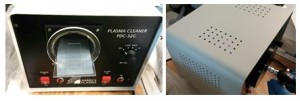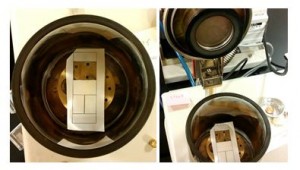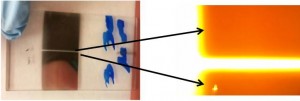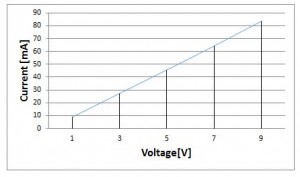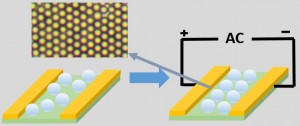Bruno Rafael Becker1, 2, Tristan Sun1, Shengjie Zhai1 and Hui Zhao1
1. Department of Mechanical Engineering, University of Nevada, Las Vegas NV, US
2. Department of Mechanical Engineering, Universidade Tecnologica Federal do Parana, Brazil
Why is this useful?
Electric fields are widely used to manipulate particles or fluid in lab-on-a-chip systems, for example to separate or assemble particles and pump or mix liquids, due to their favorable scaling with miniaturization. In order to exploit the advantages of electric fields, electrodes have to be fabricated and integrated with lab-on-a-chip devices. Patterned electrodes can also serve as biosensing by measuring the electric current change due to biomolecular binding. Traditional lithography has been used for such electrode fabrication, but particularly for arbitrary shaped electrodes, it is time consuming, requires expensive equipment and needs to be conducted in a cleanroom environment.
Hence, here we developed a simple fabrication method using commercial polymer fishing lines or metal bonding wires as a mask that does not require sophisticated procedures, expensive specialized instruments, and can be done outside a cleanroom environment. The gap size between the electrodes can be controlled by the commercial polymer fishing lines or metal bonding wires (from 1 mm to 1 mm). Due to the flexibility of fishing lines or metal wires, electrodes with arbitrary shapes can be readily fabricated by manipulating flexible lines. The fabrication method is particularly useful for demonstration of proof-of-concept or quick prototyping in terms of searching for the optimal shape, or researchers who lack the access to cleanroom or expensive lithographic equipment.
What do I need?
- Glass slides
- 3M double-sided tape
- Deionized water (DI water)
- Isopropyl alcohol
- Acetone
- Ultrasonic cleaner
- Plasma cleaner
- Sputter coating machine
- Commercial fishing lines or metal bonding wires
What do I do?
1. Use DI water to clean the glass slide in the ultrasonic cleaner for 240 seconds and then dry the slide with the pressurized air (Fig. 1).
2. Repeat the step 1 with isopropyl alcohol.
3. Repeat the step 1 with acetone. Acetone not only dissolves remaining contaminants but also provides negative surface charges to the glass surface to prevent adhesion of colloidal particles.
4. Put the glass slide into the oxygen plasma cleaner for 2 minutes (Fig. 2).
5. Use the double-sided tape to fix the fishing line on the glass slide.
6. Cover the glass slide with a cut paper. The cut paper along with the fishing line serves as a mask. The double-sided tape also keeps the paper fixed on the glass slide (Fig. 3).
7. Place the glass slide covered with the mask in the sputter coating machine (Fig. 4).
8. Sputter coating for 50-60 seconds to get 50-60 nm thickness metal electrodes.
9. Remove the mask from the glass slide (Fig. 5).
What else should I know?
Copper wires with a diameter of 140 µm were also tested. But because of their rigidity, they could not be aligned securely with the glass surface; consequently, the gold was sputtered around the wire and contaminated the channel. A 25 µm gold bonding wire was tested to determine the applicability of the method to fabrication with even smaller feature sizes. Electrodes with a 25 µm gap size are successfully fabricated, showing the robustness of our method (Fig. 6).
In the end, we connected the electrodes with a 100 ohms resistor with the electrodes, applied a voltage, measured the current, and plotted the I-V curve (Fig. 7). The I-V curve shows that the resistance of the electrodes is around 10 ohms, demonstrating the effectiveness of our method in patterning electrodes.
Experiments with the fabricated gold electrodes
We used the fabricated electrodes to assemble colloidal particles into functional structures (Fig. 8). Due to the dipole-dipole interactions induced by the applied electric fields, 5 micrometer latex particles are assembled into ordered structures with an AC electric field of 100 KHz and 10 V, which can find applications in photonics or biosensing.



